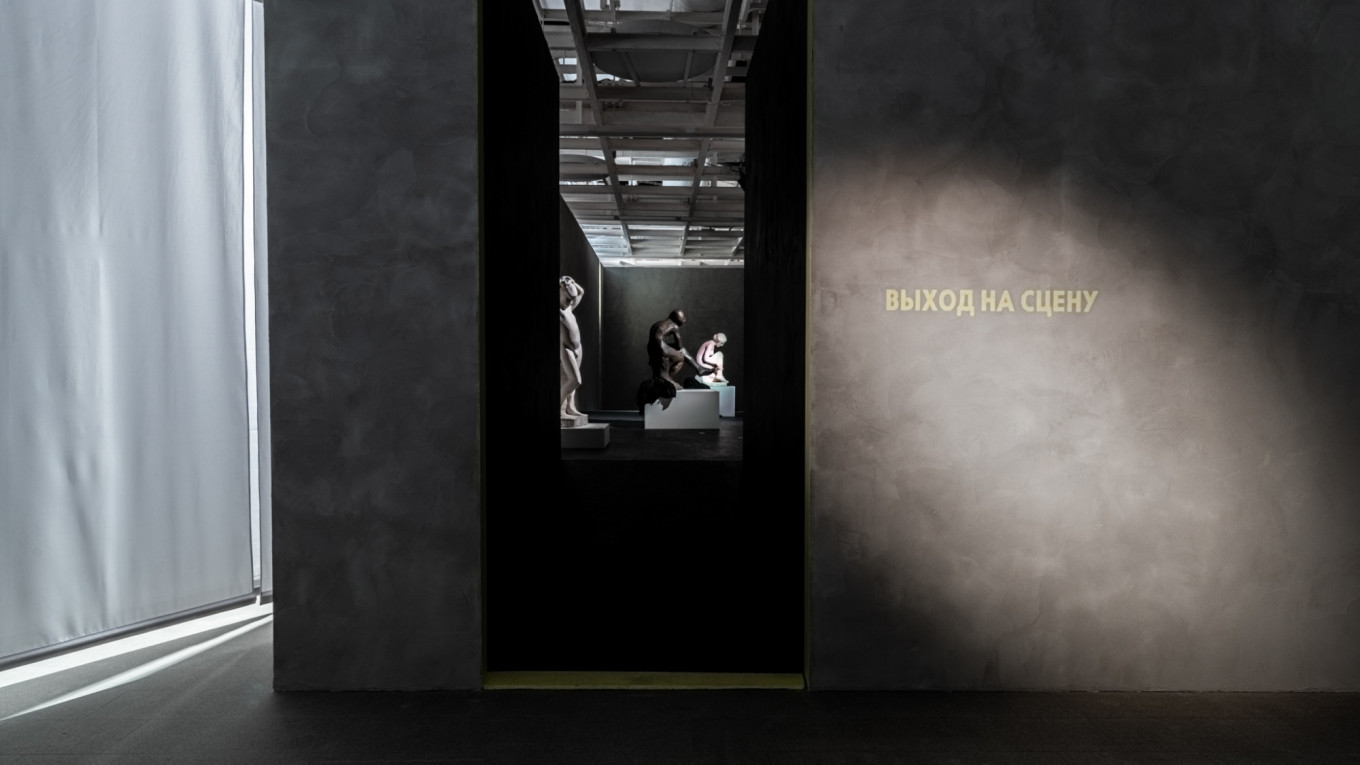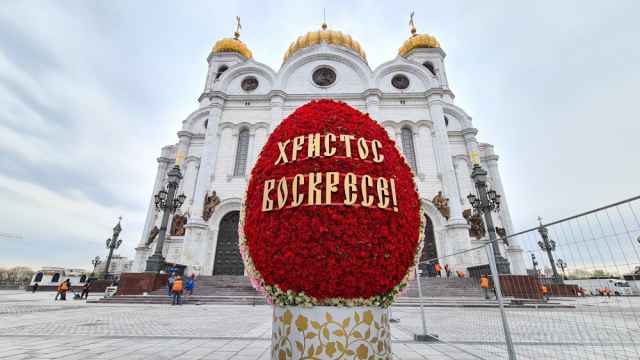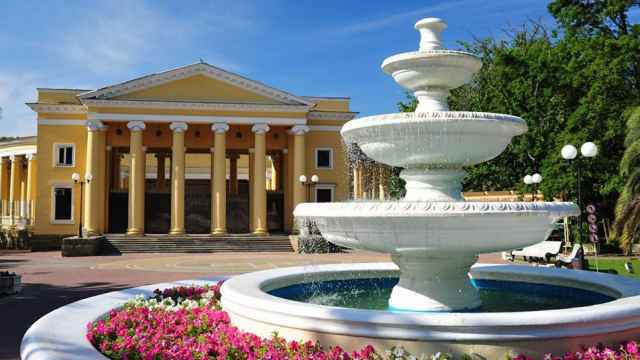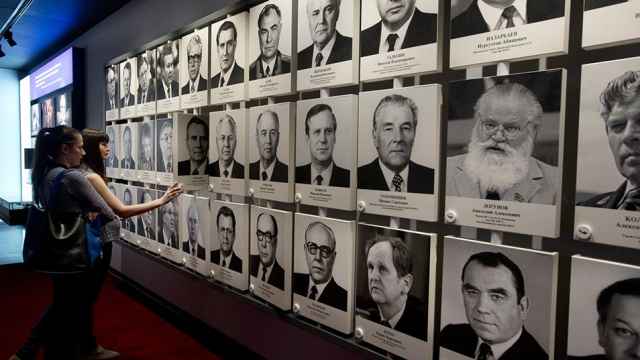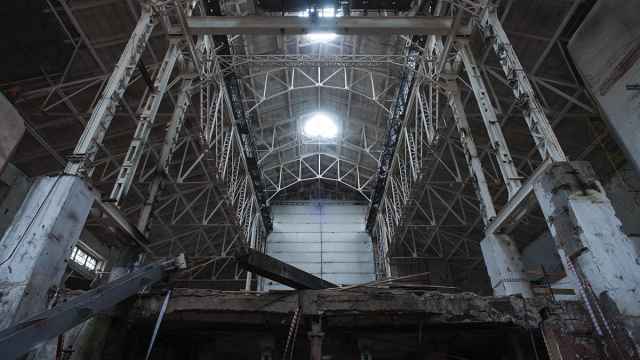An exhibition called “Stillness. Russian Classical Sculpture From Shubin To Matveev” opened at the Manege in St. Petersburg, throwing a virtual bridge across centuries, artists and art forms. The spacious halls of the Manege have been transformed into theater spaces, complete with a foyer, dressing rooms, an orchestra pit, audience seats and stages where different performances take place. The “performers” are sculptures, placed to act out selected scenes from the famous operas playing in every hall.
The project’s curators have selected more than 150 sculptures to show the evolution of this art form in Russian, from the times of Fedot Shubin, who created portraits of the Empress Catherine the Great and scientist Mikhail Lomonosov from life, to Soviet-era masterpieces by Alexander Mikhailov.
“Each item is a classic example of Russian sculpture and every single one is a masterpiece,” Yelena Karpova, one of the exhibition’s curators and head of the sculpture department of the State Russian Museum, told The Moscow Times. “But a good number of them have never been displayed to the broad public before. They will finally go down in history thanks to this show.”
The works come from 35 institutions, from Russia’s most distinguished museums to “departmental” museums that provide limited access to the general public, such as the Scientific-Research Museum of the Russian Academy of Arts. Some pieces traveled to St. Petersburg from more distant regions of the country.
Director Vasily Barkhatov, who has staged operas in the Mariinsky and Bolshoi theaters, brought opera into an emotional dialogue with the sculptures with the group Tsirkul Creative Laboratory.
“I thought of the sculptures as potential stage characters that I was plunging into opera scenes to see if they could live there,” Barkhatov told The Moscow Times. “But I also needed to keep them in the era of their creation, since the goal was to showcase the connections between art forms. And here, as with every opera production, audiences might see the characters in a totally different light.”
After studying the sculptures selected for display, Barkhatov chose 15 operas, including Leos Janacek’s “Jenufa,” Richard Strauss’s “Salome,” Jules Massenet’s “Don Quixote,” Richard Wagner’s “The Flying Dutchman,” Pyotr Tchaikovsky’s “Yevgeny Onegin,” Alexander Dargomyzhsky’s “Rusalka” and Guiseppe Verdi’s “Aida.”
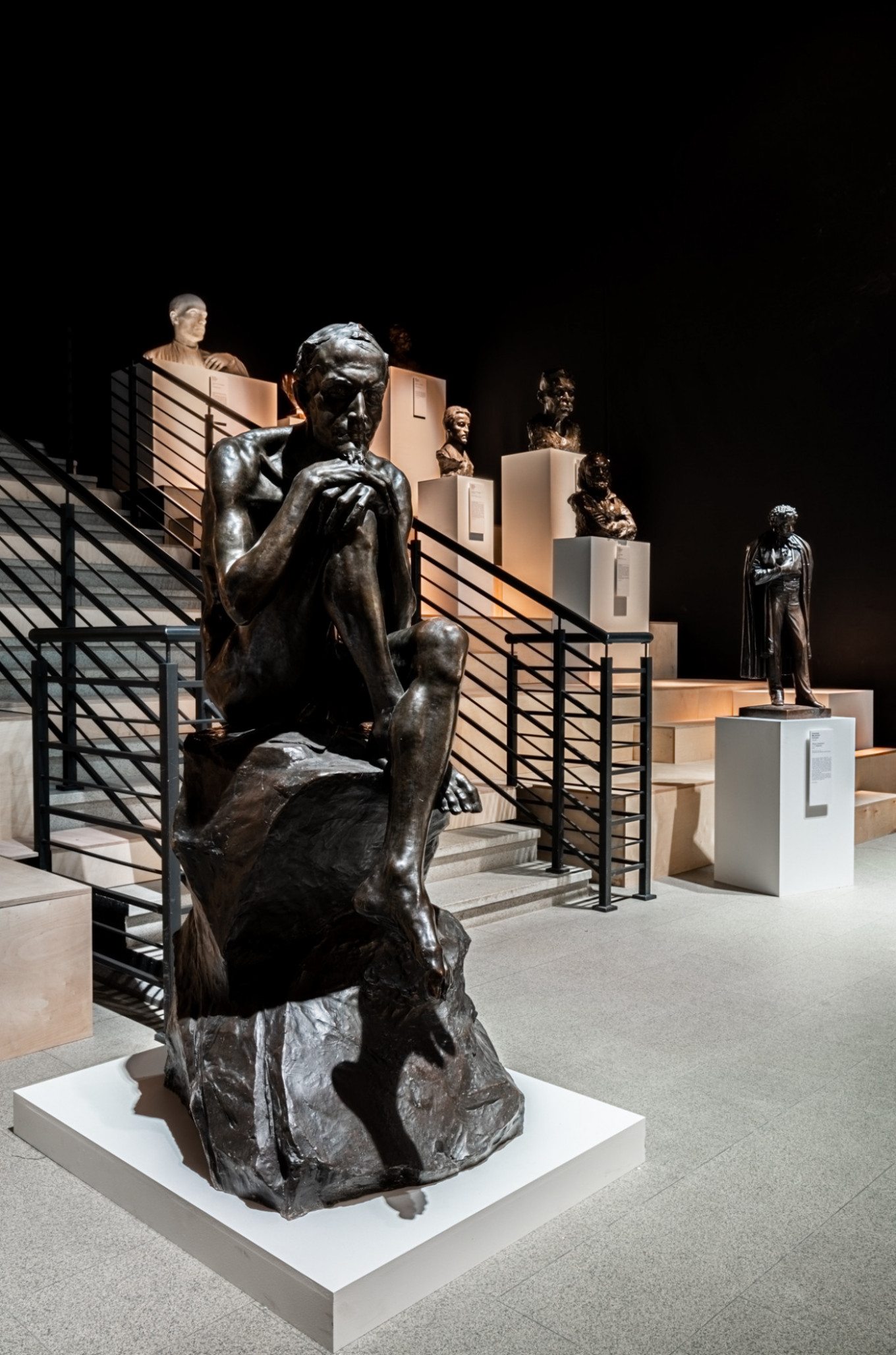
The result of this unexpected mix of genres? A thoughtful Mephisto (by Mark Antokolsky) gazes into space from the front row of the improvised theater to the sounds of a barcarolle from Jacques Offenbach’s “The Tales of Hoffmann” as some of Russia’s most celebrated cultural figures (in their sculptural incarnations) get ready for the show in their dressing rooms. Next to the famous actor Mikhail Shchepkin (by Nikolai Ramazanov) is poet Alexander Pushkin (by Ivan Vitaly). Several sculptors are also getting ready to go on stage, as it were: Zinaida Klobukova (by Anna Golubeva) and Ivan Martos (by Samuil Galberg) wait for their cue.
In a hall-cum-stage, Salome’s famous “Dance of the Seven Veils” is performed by Nymphea (by Alexander Matveyev), a runaway slave (by Vladimir Beklemishev) and Undine (by Mark Antokolsky). On another stage, Jules Massenet’s “Don Quixote” is simply played by Ilya Gintsburg’s rendition of the Knight of the Sad Countenance and his unfailingly loyal aide, Sancho Panza.
The two naked figures cuddling together in Naum Aronson’s sculpture composition “Sorrow” perform the roles of Manon and Chevalier De Grieux in the final scene of Giacomo Puccini’s “Manon Lescaut.” Ivan Prokofiev’s “Akteon Chased by Dogs” plays Leporello in Mozart’s “Don Giovanni.”
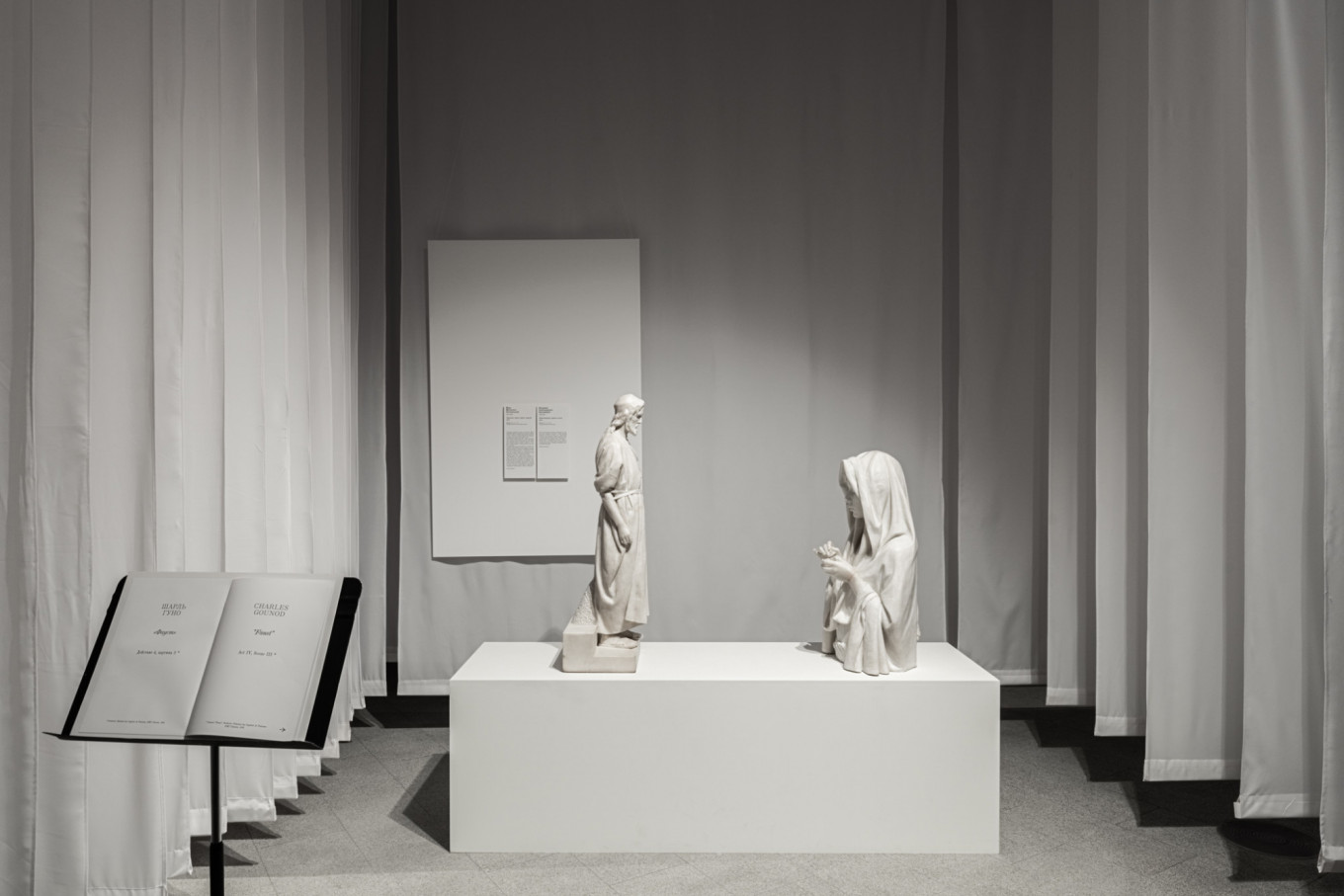
Pavel Prigara, the director of Manege, had the idea for the project about three years ago. Barkhatov joined the project enthusiastically, thinking of the sculptures as his actors. “That was the whole point — to give voice and action to the sculpture; to create a space filled with music, where the spectators would find themselves in a theatrical mise en scene. They would be able to see, hear and feel every player’s individuality and appreciate their unique story,” Barkhatov said.
“The challenge was to break the stereotype that the public has about both genres — that they are beautiful yet conventional, too refined, but also academic and a bit dull,” he added.
For more information about the exhibition, which runs until May 16, see the Manege site here.
A Message from The Moscow Times:
Dear readers,
We are facing unprecedented challenges. Russia's Prosecutor General's Office has designated The Moscow Times as an "undesirable" organization, criminalizing our work and putting our staff at risk of prosecution. This follows our earlier unjust labeling as a "foreign agent."
These actions are direct attempts to silence independent journalism in Russia. The authorities claim our work "discredits the decisions of the Russian leadership." We see things differently: we strive to provide accurate, unbiased reporting on Russia.
We, the journalists of The Moscow Times, refuse to be silenced. But to continue our work, we need your help.
Your support, no matter how small, makes a world of difference. If you can, please support us monthly starting from just $2. It's quick to set up, and every contribution makes a significant impact.
By supporting The Moscow Times, you're defending open, independent journalism in the face of repression. Thank you for standing with us.
Remind me later.


